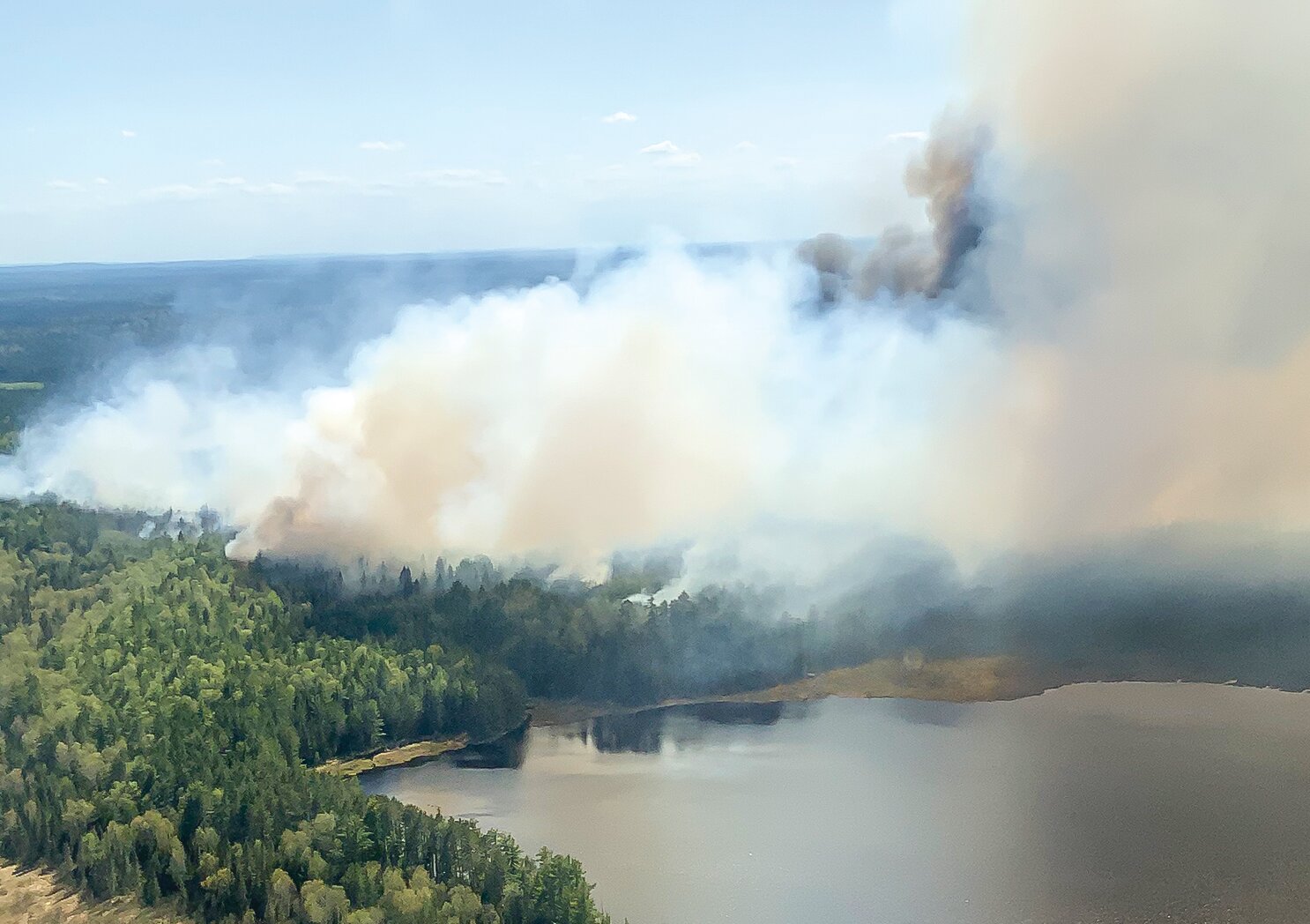Support the Timberjay by making a donation.
Fire risk unusually high
Warm temperatures and little snowcover bring an early fire season
REGIONAL— Fire officials in northeastern Minnesota are ramping up their messaging ahead of what could be one the worst spring fire seasons in years. With little snow cover remaining in the area …
This item is available in full to subscribers.
Attention subscribers
To continue reading, you will need to either log in to your subscriber account, or purchase a new subscription.
If you are a current print subscriber, you can set up a free website account and connect your subscription to it by clicking here.
If you are a digital subscriber with an active, online-only subscription then you already have an account here. Just reset your password if you've not yet logged in to your account on this new site.
Otherwise, click here to view your options for subscribing.
Please log in to continue |
Fire risk unusually high
Warm temperatures and little snowcover bring an early fire season
REGIONAL— Fire officials in northeastern Minnesota are ramping up their messaging ahead of what could be one the worst spring fire seasons in years. With little snow cover remaining in the area and continued warmer-than-normal temperatures in the forecast for the first half of March, the spring wildfire season could well start earlier and be more intense than usual here in the North Country.
The potential has already caught the attention of the National Interagency Fire Center, which now highlights all of Minnesota and the northern third of Wisconsin as facing an above normal risk for significant wildfire potential from March through May. It’s reminiscent of the conditions in Canada last year, when an early end to typical winter conditions led to the worst wildfire season in Canadian history.
Fire officials here are hoping to avoid a similar outbreak of fire here. “We are gearing up earlier on fire prevention messaging and wildland firefighter crew preparedness,” said Nick Petrack, fire management officer on the Superior and Chippewa national forests.
While snow cover typically limits wildfire danger in northern Minnesota in March and often well into April, the record warmth and lack of snow this season has left the area facing wildfire conditions that are well outside what’s normal.
What’s more, fine fuels, like grasses and sedges, are typically laid down flat during heavy snows early in the winter, which can significantly slow their ability to dry. But the lack of heavy snow this winter has left many of those fuels still standing and that is likely to allow them to dry enough to sustain fire with just a few hours of sunny conditions. Such fine fuels, once dry, can allow for rapid fire growth, especially during windy conditions and low humidity, both of which are common in the North Country well into May.
Dry conditions
While the public may be less aware of drought conditions during the winter months, precipitation deficits do add up even in the winter, and that’s been the case this year in many locations in northern Minnesota. According to the U.S. Drought Monitor, all of St. Louis County is currently listed as abnormally dry, at least, while far northeastern St. Louis and all of northern Lake counties are listed in moderate drought.
A large swath of north-central Minnesota is currently listed in severe drought. Across the border in northwestern Ontario, the Canadian Drought Monitor shows moderate drought extending across virtually the entire Minnesota-Ontario border from Grand Portage to International Falls.
While spring snowmelt frequently adds to soil moisture levels, this year’s lack of snowpack will increase drought conditions unless significant rain or snow falls in the region in the near future.
Meanwhile, the 6-10-day and 8-14-day outlooks from the U.S. Climate Prediction Center, call for continued above normal temperatures, with only slightly higher than normal chances for precipitation.
Focus on prevention
Smokey Bear, who turns 80 this year, is well-known for his message that “only you can prevent forest fires.” Since most forest fires are caused by lightning, Smokey’s message can be misleading, but it does point to the fact that humans can take steps to reduce the likelihood of wildfires and reduce the risks of property damage and health effects from smoke when fires do occur.
That’s why the Forest Service and other agencies are pushing a fire prevention message. According to Petrack, the Forest Service is focused on working with communities and landowners “to reduce vegetation across more fire prone landscapes” as a way to protect homes and cabins and slow the spread and intensity of wildfires.
“Staying vigilant in fire prevention year around is key, and especially during dry and warm conditions,” said Petrack.
According to Petrack, wildfire activity is occurring earlier in the spring, is lasting longer into the fall, and involves larger, more intense fires that are increasingly difficult to control.
That means North Country residents, particularly those who live in the woods rather than town, are facing increasing risk from wildfire as climate change continues to advance— and that is certainly the case this spring.
Fortunately, note fire officials like Petrack, there are steps you can take today to reduce the risk of wildfire around your home or cabin. The DNR’s Firewise program offers a number of excellent strategies for home or cabin owners in fire prone areas and you can find that information on the DNR’s website by googling DNR Firewise. In general, these tips focus on ways to improve access to your property for firefighters, how to reduce fuel loads on your property to create defensible spaces, how building practices and maintenance can harden your structures, and how your own burning practices can be made safer.
Keep informed
For information and daily updates on Minnesota wildfire danger, current burning restrictions or to obtain a variance burn permit, visit the Minnesota DNR website at: mndnr.gov/burnrestrictions.






